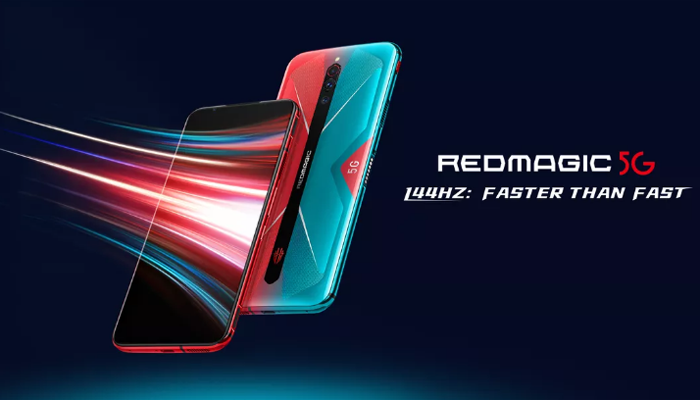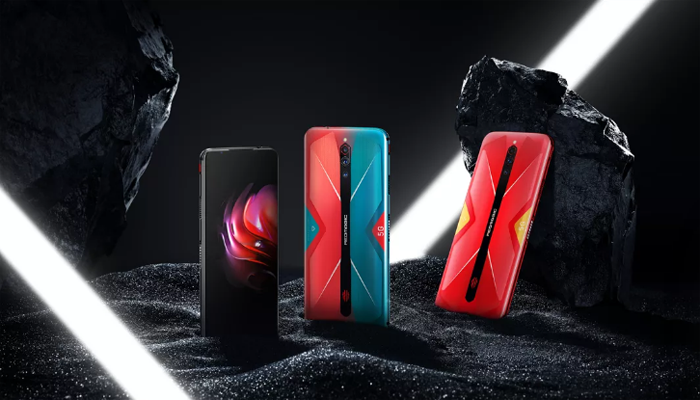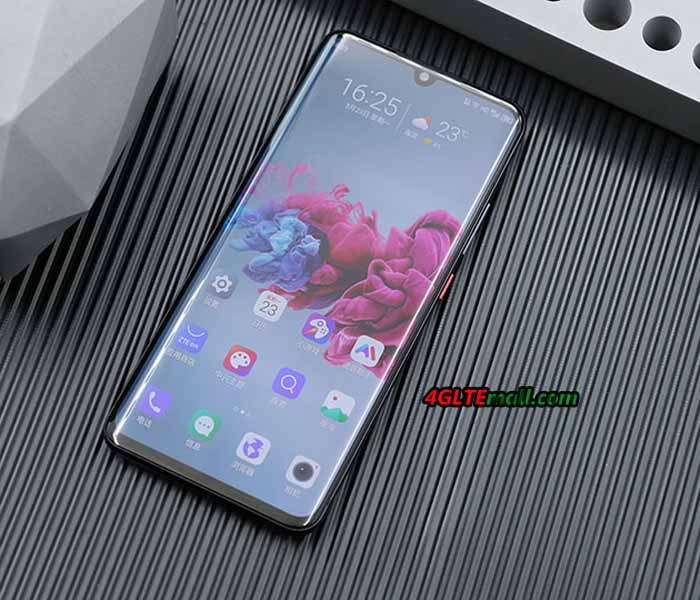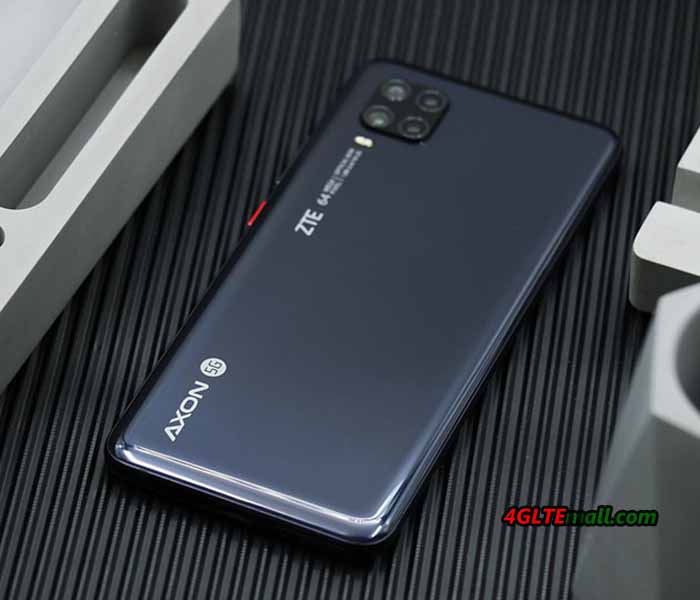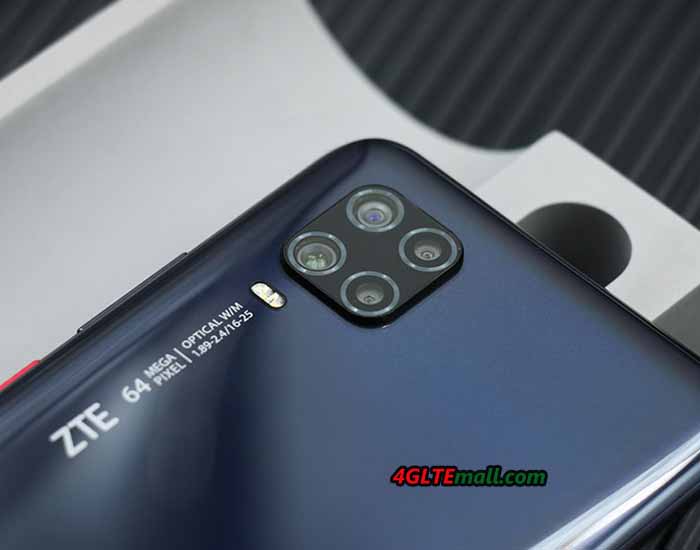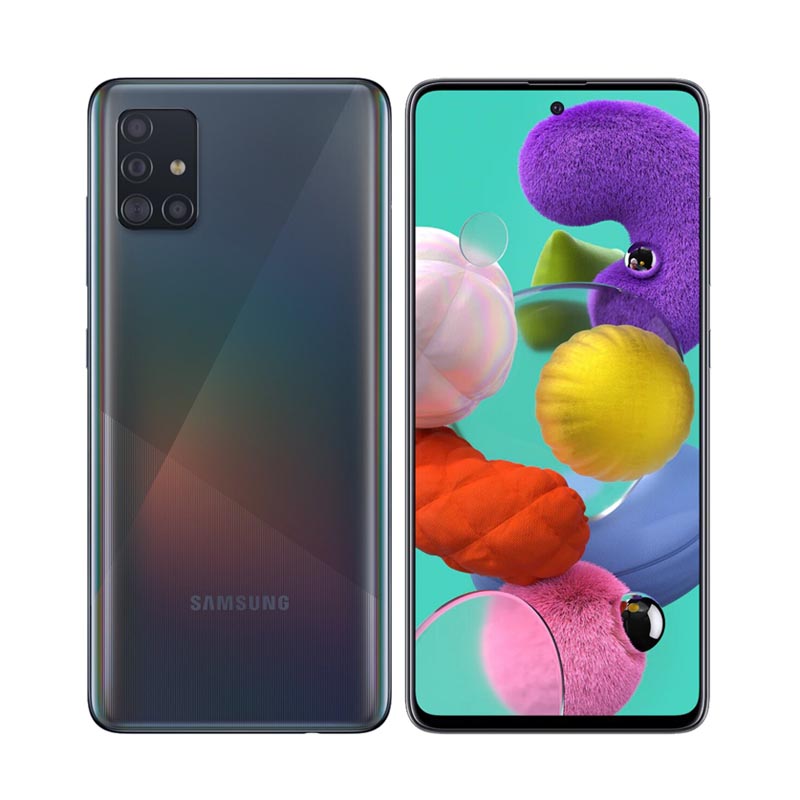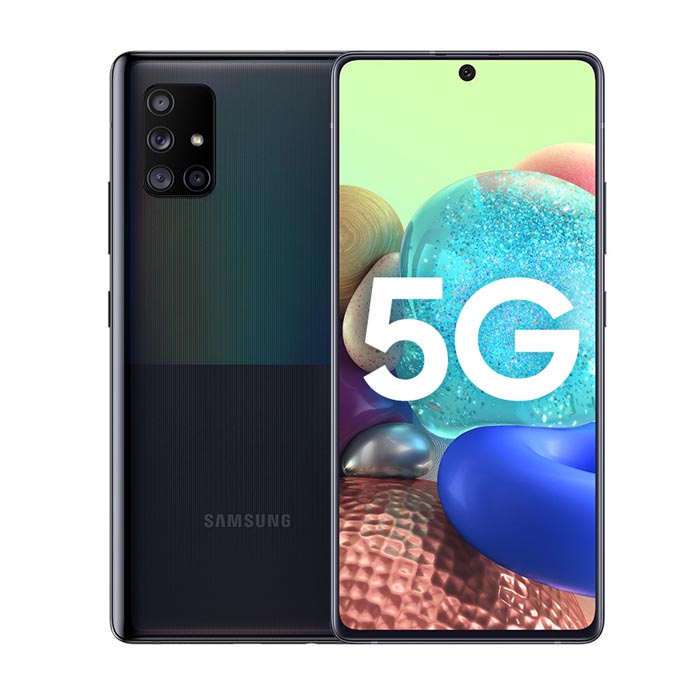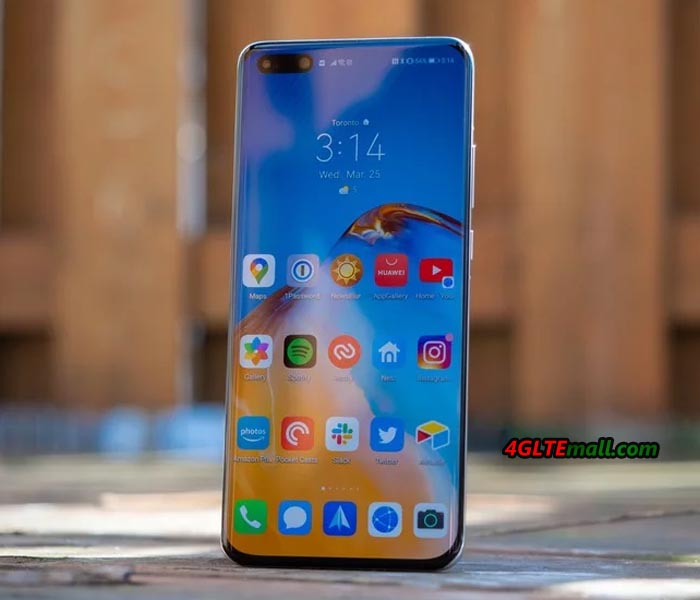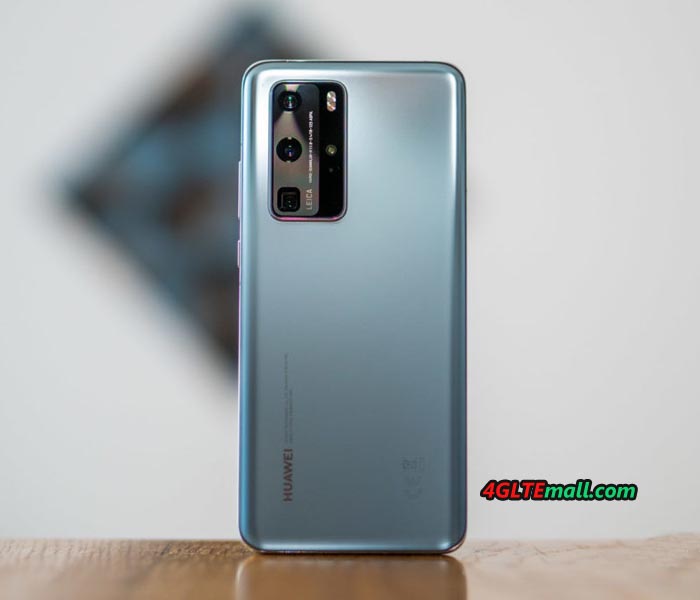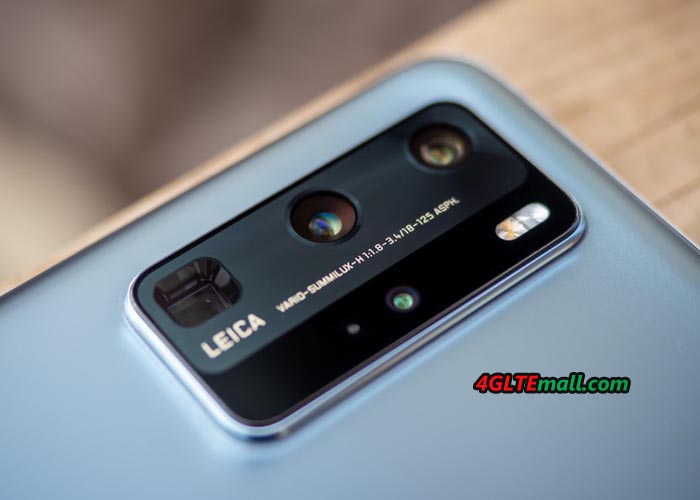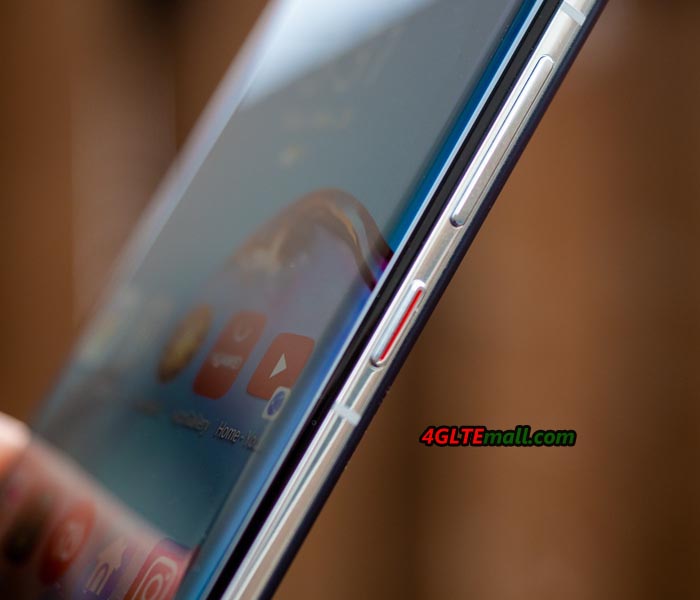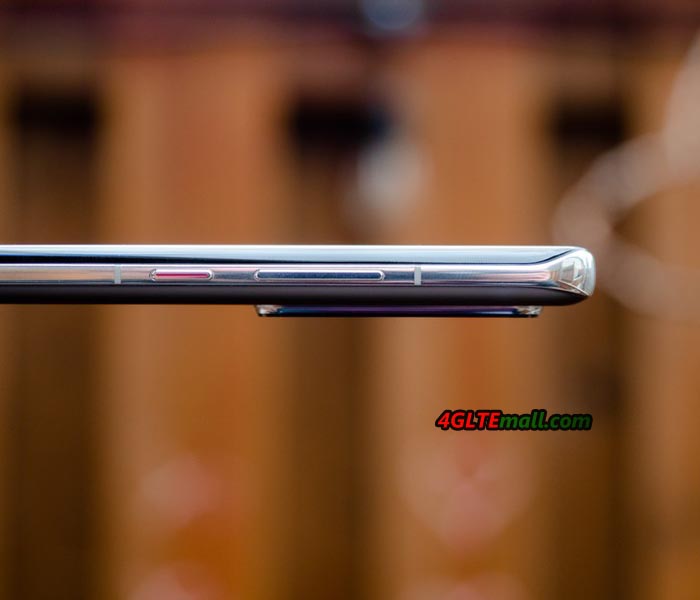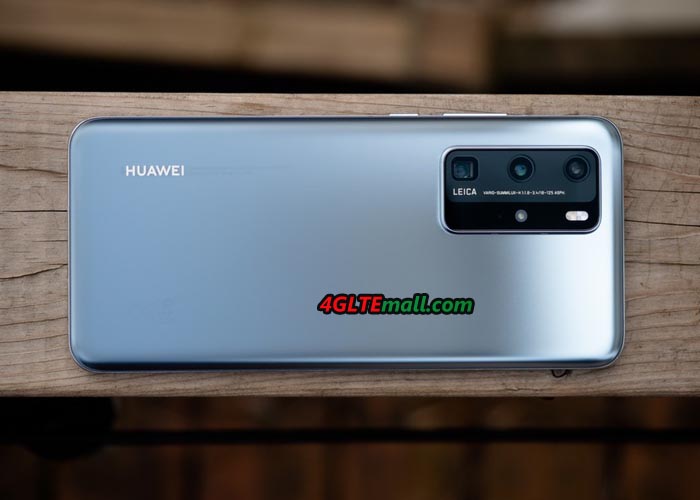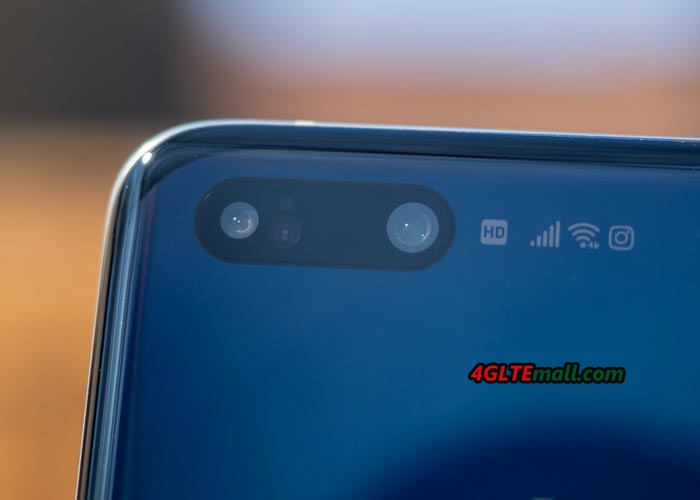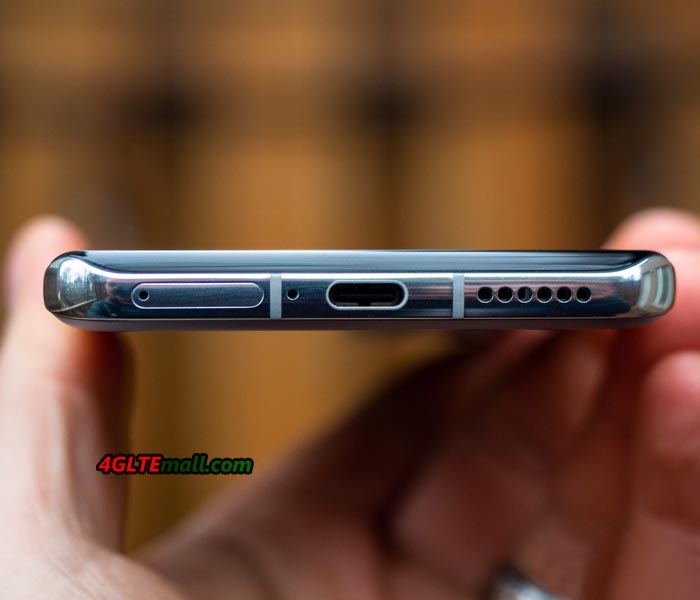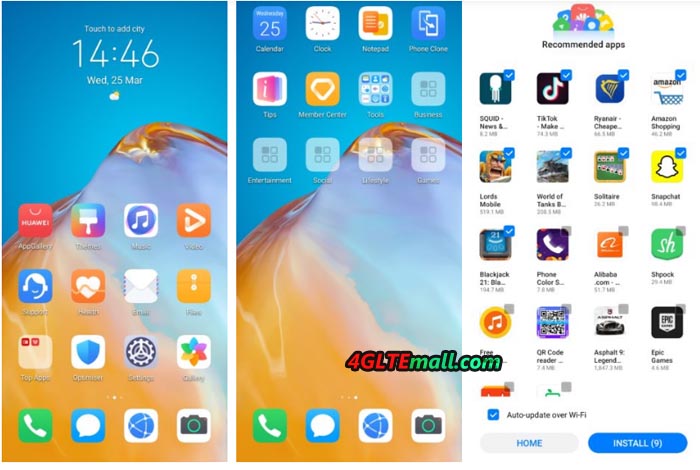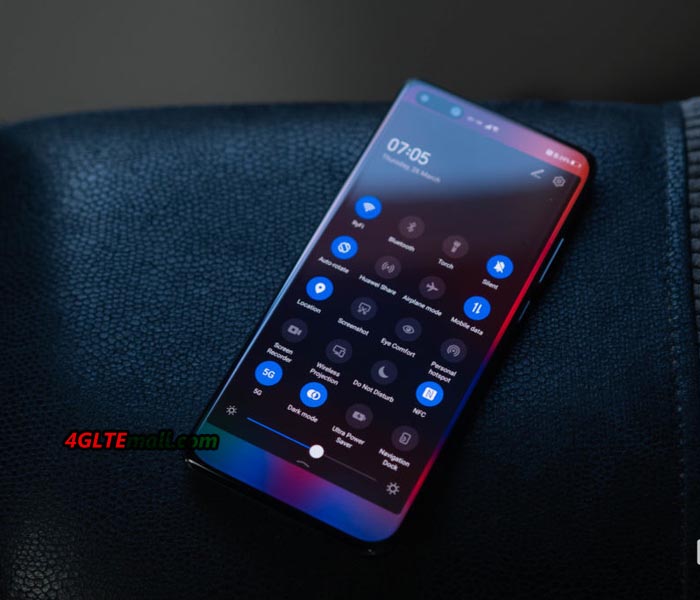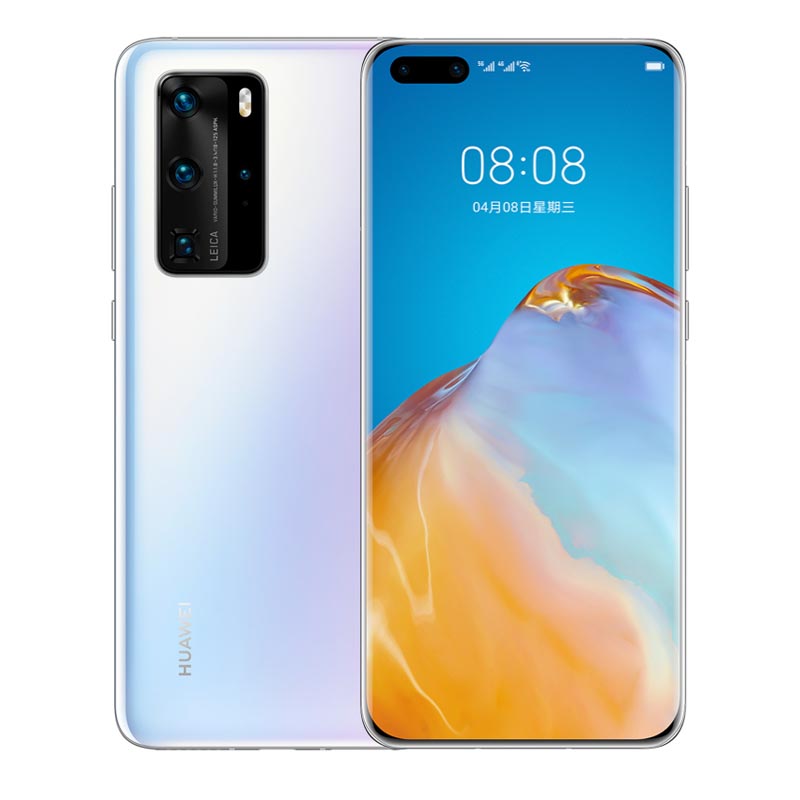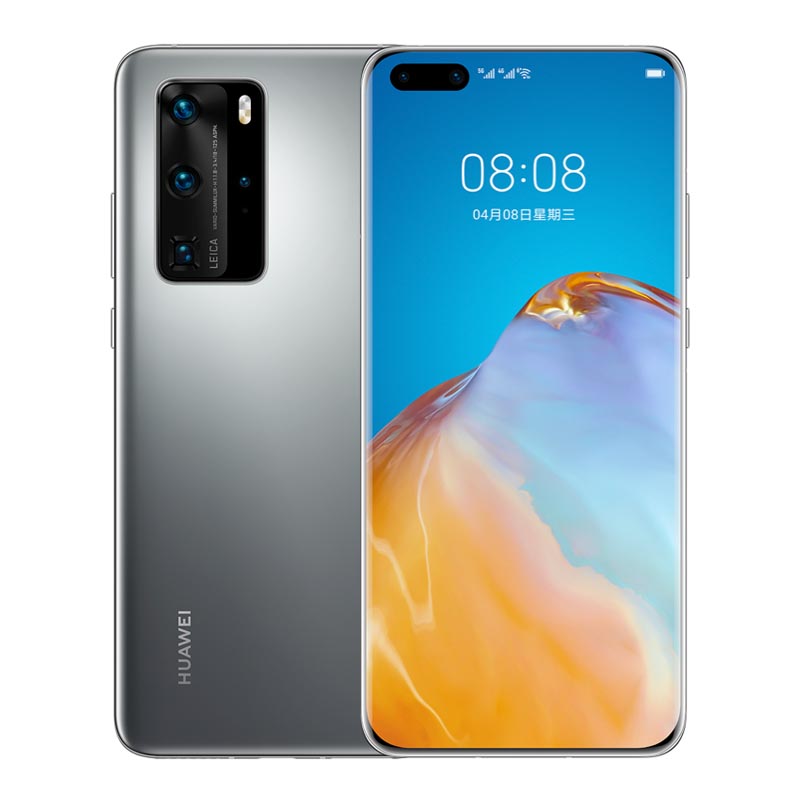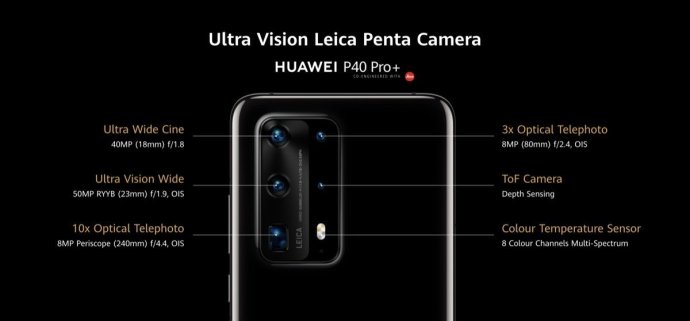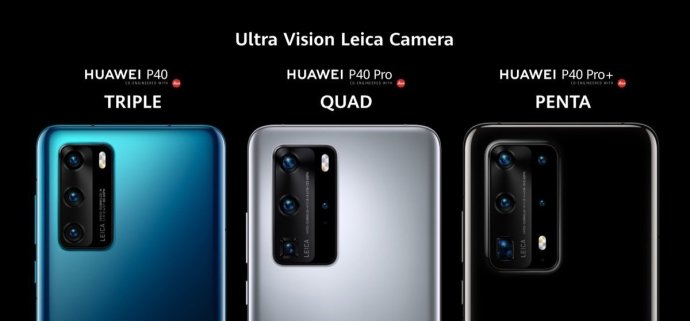未選択
-
Nubia Launched RedMagic 5G Gaming Smartphone
As the first 5G mobile phone from Nubia, the RedMagic 5G from the Chinese manufacturer ZTE is primarily geared towards gaming and (according to the name) supports the new 5G mobile communications standard. The Nubia's flagship RedMagic 5G will go on sale globally starting April 21.
New gaming smartphone with Snapdragon 865
The heart of the Nubia RedMagic 5G is the new Snapdragon 865, which is cooled down by active liquid cooling for maximum performance. It is supported by an Adreno 650 GPU and a 5G modem with SA + NSA dual-mode operation. Depending on the model, there are four different combination for storage: 8GB RAM + 128GB ROM, 12GB RAM + 128GB ROM, 12GB RAM + 256GB ROM, and 16GB RAM + 256GB ROM, of course, the prices would be higher on the large capacity. A 4,500 mAh battery is responsible for the power supply, which can be quickly charged with a maximum of 55 watts.
In terms of specs, the RedMagic 5g features a 6.65-inch FHD+ AMOLED display with 144Hz refresh rate and 240Hz touch sampling rate, with a follow-up response time of 14.9ms. It also gets a sliding response time of 45ms and a click response time of 32.2ms. The phone sports the latest Snapdragon 865 chipset paired up with up to 16GB of LPDDR5 RAM. It comes with latest L-shaped cooling pipe and also gets new Active Liquid-Cooling with Turbo Fan 3.0 which is claimed to be 200 per cent cooler from previous RedMagic smartphones. The new cooling technology has also increased the airflow volume by up to 30 per cent and features multilayer thermal graphite as well. The specs seems much better than the other 5G phones from ZTE such as ZTE Axon 11 5G and Axon 10 Pro 5G.
First of all, the 5G mobile smartphone starts in China. However, it should also be available globally in April 2020. And now the Red Magic 5G phone is available in China for sale and the price is in middle range, not cheap and also not too high. Converted from the China prices, the smaller model in black and red with 8 GB RAM and 128 costs just under 600USD, the best one with 16 GB RAM and 256 GB memory is over 800USD.
The RedMagic 5G phone provides many colors for the users such as Black, Mars Red, Cyber Neon, Transparent. They all look very cool and fashion. The RedMagic 5G will be made available in EU (Austria, Belgium, Bulgaria, Croatia, Cyprus, Czech Republic, Denmark, Estonia, Finland, France, Germany, Greece, Hungary, Italy, Latvia, Lithuania, Luxembourg, Malta, Netherlands, Poland, Portugal, Romania, Slovakia, Slovenia, Spain, Sweden) and Australia, Hong Kong, Israel, Japan, Singapore, Indonesia, Taiwan, and Macao. We will keep update on this ZTE 5G cell phone.
PR -
ZTE Axon 11 5G New Smartphone Presented in China
The Chinese manufacturer ZTE has presented its new 5G smartphone Axon 11 5G. Initially, the device will only be available in China. However, it is quite possible that the ZTE Axon 11 5G will also be available in other countries or areas in the foreseeable future.
Snapdragon 765G SoC chipset
Unlike the predecessor ZTE Axon 10 Pro 5G cell phone, the second generation 5G cell phone ZTE Axon 11 supports 5G dual-mode (SA and NSA), and the new 5G smartphone also supports LTE Cat 20 and other older mobile radio standard. As SoC, the manufacturer relies on the new Qualcomm Snapdragon 765G, which has so far been used in a few devices such as Xiaomi Redmi K30 5G, Oppo Reno3 Pro 5G, OPPO Find X2 and Realme X50 5G etc... Depending on the model, 6 or 8 GB RAM and 128 or 256 GB internal memory are available.
The battery is 4,000 mAh in size and can be quickly recharged with 18 watts with new energy. Other features include Bluetooth 5.1, NFC, Hi-Res Audio with DTS: X and a fingerprint scanner in the AMOLED display. This measures 6.47 inches in 19.5: 9 format and represents a resolution of FHD + with 2,340 x 1,080 pixels. The 90 Hz display in the curved design is slightly rounded at the edges and also has a waterdrop notch in the top center, which has a selfie camera with 20 megapixel resolution and an aperture of f / 2.0.
Quad camera on the back
A quad camera setup is installed on the back of the 159.2 x 73.4 x 7.9 mm and 168 g ZTE Axon 11 5G. Its four lenses work with 64 megapixels (wide angle with f / 1.89 aperture), 8 megapixels (ultra wide angle with f / 2.2 aperture), 2 megapixels (depth sensor with f / 2.4 aperture) and 2 megapixels (macro with f / 2.4 aperture) .
The ZTE Axon 11 5G with its equipment belongs to the upper middle class. As told before, the ZTE 5G phone will initially only be launched in China. However, it could be bought from online stores. The price is not expensive for the version with 6 and 128 GB. The larger version with 8 GB RAM and 256 GB storage will cost more but not yet available now. This ZTE 5G phone is a budget one if you want to change 4G phone to 5G.
Here now, the new ZTE Axon 11 SE 5G is available with MediaTek MT6873 Dimensity 800 5G Chipset and cheaper price. We will compare the ZTE Axon 11 and Axon 11 SE 5G in future.
-
Samsung Introduced 5G Galaxy A51 and Galaxy A71
To compete with the Chinese mobile phone manufacturers in middle range smartphone, Samsung introduced two new 5G smartphones to the market: Galaxy A51 5G and Galaxy A71 5G. The two new devices differ primarily by 5G, but not only in this way from the LTE versions. We had introduced the mid-range 5G cell phone from Samsung Galaxy A90, which is a powerful competitor to other 5G phones from Huawei, OPPO, VIVO and Xiaomi. Now the two new Samsung 5G phones brings more opportunity to occupy market share for Samsung worldwide.
The Samsung Galaxy A51 5G is said to cost just under $500, according to Samsung, which is a mid -range 5G smartphone for the money. An octa-core processor with a rate of up to 2.2 GHz works inside the phone. It is supported by either 6 or 8 GB RAM and 128 GB internal storage. If required, this can be expanded by up to 1 TB using a microSD memory card. The power supply is provided by a 4,500 mAh battery, which is slightly larger than the 4G Galaxy A51. It can be charged with a maximum of 15 watts via USB Type-C.
The front camera sits in a central hole in the 6.5-inch display with a resolution of 1,080 x 2,400 pixels. It has a resolution of 32 megapixels. Samsung uses a quad camera on the back. The main sensor has a resolution of 48 megapixels. There is also a wide-angle camera with 12 megapixels and two sensors for macro shooting and depth information, each with 5 megapxels.
The differences between the Samsung Galaxy A51 5G and the Galaxy A71 5G are not too big. The display is somewhat larger at 6.7 inches, but has the same resolution. The CPU and RAM as well as the internal memory are identical. The battery is also the same size, but can be charged even faster with 25 watts. In addition, the camera setup on the back of the device is slightly better. Here the main sensor has a resolution of 64 megapixels, while all other sensors have identical specifications. The price is a little higher around $ 599.
Here now the Samsung Galaxy A71 5G is available for sale in the USA and will be available in China in April. When will the Galaxy A51 5G be available is unknown yet.
-
Huawei P40 Pro 5G SmartPhone Test
Before we get started, we should tell you can still install Google apps on the device, but that's not really safe. But Huawei will have to go without Google in the long run anyway. Today we will have a test of this new Huawei 5G smartphone: Huawei P40 Pro.
Huawei P40 Pro Specifications:
- Manufacturer:Huawei
- Model name:P40 Pro
- Price: 1199USD
- Available:from April 8, 2020
- Size:2 x 72.6 x 8.95 mm
- Weight including battery:209 g
- Operating system:Android 10
- Battery:4200 mAh
- Display:58 ″ OLED display (FHD +, 90 Hz)
- Camera:Quad camera (50 + 40 + 12 MP + ToF)
- Storage:256 GB
- CPU:Kirin 990 with 5G
- RAM:8 GB
These are not all specifications of the Huawei P40 Pro. On the Huawei official website, you can get more information about the Android smartphone.
Huawei P40 Pro design and feel
At the beginning of 2020, we was afraid that all flagship phones would get bigger, but Huawei hardly changed anything with the P40 Pro. It feels similar to the Huawei P30 Pro. That doesn't mean it's a particularly light and compact smartphone, but we find it a lot more comfortable than the latest new Samsung Galaxy S20 Ultra.
The processing is of course clear again and the design is now a bit "rounder" because the glass on the back and front has also been bent at the top and bottom. Incidentally, the display was not bent there. But we have to say that the difference compared to the P30 Pro is not big and it feels very similar. We tested the P40 Pro in silver color, which is one of the most beautiful colors on the market. The camera hump is now a bit bigger, which unfortunately has a small disadvantage. The camera hump is not quite as wide, but just as high, thick and sharp-edged as the Samsung Galaxy S20 Ultra. That could have been solved a little more comfortably for my taste.
Huawei P40 Pro Display
The display of Huawei P40 Pro made a very good impression in the first impression and we were also completely satisfied in the test. It doesn't quite come close to the current Samsung panel with 120 Hz, but it's not that far away either. FHD+ doesn't bother too much, by the way, it is criticized in this price range.
The front camera is very good, but the hole is too wide. There is a front camera and an infrared sensor designed to optimize unlocking in poor light. Face unlock works great too, but it's still a 2D scanner and not a 3D scanner. If you are already installing such a wide hole, then please use a camera that enables a 3D scan of the face.
But apart from that, we was very satisfied with the display, it delivers good colors and viewing angles, is pleasantly fast at 90 Hz and there is a thin bezel. It's not the best OLED display on the market, but it's good enough for a flagship in this price range, and luckily not bent as much as the Mate 30 Pro.
Huawei P40 Pro Camera
The highlight of the P series is the camera and that will also be the case in 2020. Huawei has improved the video quality and it still does not come close to Apple and Samsung, but it is no longer a weakness (like last year). In addition, there is finally 4K with 60 fps. The quality should be enough for most.
However, Huawei has put the focus back on the photos and there is now a new sensor with 50 megapixels. This sensor is damn good and takes extremely sharp pictures, even in poor lighting conditions without night mode.
The difference to the P30 Pro is not serious (which speaks for the P30 pro), but the P40 Pro has made another leap. The pictures with 5x zoom are also very passable.
Too bad that the 10x optical zoom is only available in the Huawei P40 Pro Plus, that would have been a unique selling point. The 10x hybrid zoom is also good. The 5x zoom of the Huawei P40 Pro is frankly a bit too much.
The front camera takes very good pictures, as we have already mentioned and the ultra-wide shots can also convince. With portrait photos, the Huawei P40 Pro recognizes the outlines very well thanks to the ToF sensor, but we also found in the test that the object in focus often looked a little blurred. Huawei would have to add a software update.
Huawei has installed one of the best cameras on the market and shows that Samsung cannot deliver better pictures with twice as many megapixels. We think the sensor from Huawei is clearly better.
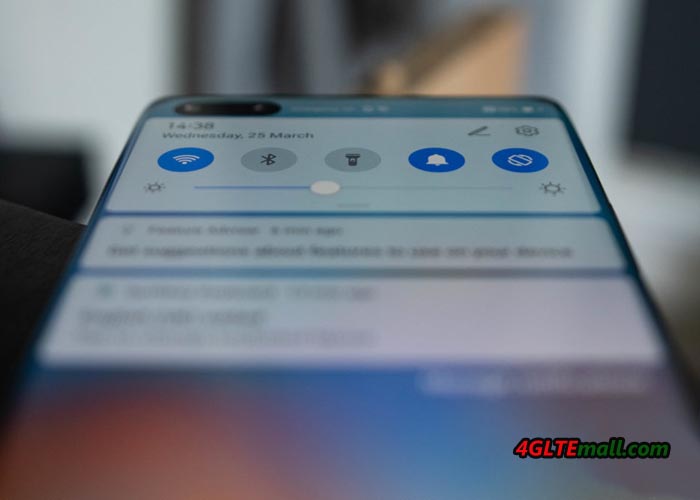
Huawei P40 Pro Battery
The Huawei P40 Pro offers excellent battery life. The competition has now built bigger batteries in their flagships, but Huawei gets more out of the 4200 mAh than Samsung out of 5000 mAh. The P40 Pro is again a long-distance runner, despite the 90 Hz, which drain the battery a little faster.
Nothing has changed with fast charging, as in 2019 there is the option for up to 40 watts, which is easily enough. It charges wirelessly with up to 27 watts, which is also enough. The Plus model, which comes in June, offers Qi with up to 40 watts and is the current leader on the market.
Huawei has of course given the P40 Pro reverse charging again, so you can also charge other Qi models wirelessly on the back of the P40 Pro.
Huawei P40 Pro Software
Over the past few years, we have gradually become warm with EMUI and EMUI 10.1 is also a step forward.. In addition, the performance is right, because the Huawei P40 Pro is very fast, there is nothing to complain about.
But you know what is coming: The Google services are missing. No Google Play Store, no YouTube app, no Google Pay, no banking app in the AppGallery, no Android Auto, everything is missing. Some apps can be found through other stores or downloaded APK files, but to be honest it is tedious. Those who rely on Google and Co. will not be happy with the P40 Pro.
We tried to get the best out of it, but that's not enough. You don't just have to look for some apps somewhere on the web, you also have to check for updates and install them manually. And if there is a deal like Monument Valley 2, then you are unlucky with the Huawei P40 Pro.
This didn't bother me so much with the Huawei Mate 30 Pro, and the Huawei Mate Xs which is a smartphone for a very small target group. With Google apps, that would have been an excellent flagship.
Huawei P40 Pro Conclusion
In summary, the Huawei P40 Pro has the best hardware on the market. It hasn't gotten bigger, it has a great display, it has an excellent camera, and it still has a good battery life and almost everything else you would expect in an Android flagship.
However, for many users, you couldn't use it in everyday life without Google apps. Only those who can completely do without Google apps and the selection of the Play Store can access here without hesitation.
If it weren't for the problems with the US government, the Huawei P40 Pro would again be one of the best Android smartphones on the market. But the software is decisive in the end and if you don't want to collect APKs and do without things like mobile payments via Google Pay, this is unfortunately wrong.
The Huawei P40 Pro with Google services would be a very clear purchase recommendation, but without it things look a bit different. Other 5G smartphones are not much worse (or sometimes better). The P40 Pro is going to have a hard time of it in 2020.
-
Huawei P40 Series Officially Launched
Yesterday, Huawei introduced the new P40 series to the public, but not as planned in Paris, but at a purely online event. The Lite models have already been shown; today the top models have been presented, which includes three models: Huawei P40, Huawei P40 Pro, Huawei P40 Pro+.
As the first new 5G cell phone from Huawei in 2020, Huawei P40 series phones will be the new flagship in the first half of the year. The price of the new flagship phone is not yet known. Huawei accept pre-order now till April 8. And Huawei will start shipping order from April 11. For pre-orders, there is also a Huawei Watch GT2e and Freebuds 3.
Anyone who has followed this new Huawei 5G phone in the last few weeks will already know the data, but if you are one of those who like to be surprised, then we have an overview with the most important specifications of the Huawei P40 series:
Huawei P40 Series Specs Comparison P40 Pro P40 Pro+ P40 SoC HiSilicon Kirin 990 5G 2x Cortex-A76 @ 2.86 GHz 2x Cortex-A76 @ 2.36 GHz 4x Cortex-A55 @ 1.95 GHz GPU Mali G76MP16 @ 700MHz DRAM 8GB Display 6.58" OLED 6.1" OLED 2640 x 1200 (19.8:9) 2340 x 1080 90Hz 60Hz Size Height 158.2mm 148.9mm Width 72.6mm 71.06mm Depth 8.95mm 9.0mm 8.5mm Weight 209g 226g 175g Battery Capacity 4100mAh (Rated) 3700mAh (Rated) 4200mAh (Typical) 3800mAh (Typical) 40W SuperCharge 22.5W Charging Wireless Charging 27W SuperCharge 40W SuperCharge - Rear Cameras Main 50MP 1/1.28" 2.44µm RYYB sensor f/1.9 OIS 23mm eq. Telephoto - 3x Optical 8MP f/2.4 OIS 80mm eq. Periscope 5x Optical 10x Optical - Telephoto 12MP RYYB 8MP f/3.4 OIS f/4.4 OIS 125mm eq. 240mm eq. Wide 40MP 16MP f/1.8 f/2.2 18mm eq. 17mm eq. Extra ToF - Front Camera 32MP f/2.2 AF 32MP f/2.0 FF + IR camera + IR camera Storage 128 / 256GB + proprietary "nanoSD" card I/O USB-C Wireless (local) 802.11ax (Wifi 6), Bluetooth 5.1 Cellular 4G + 5G NR NSA+SA Sub-6GHz Splash, Water, Dust Resistance IP68 IP53 (water resistant up to 1m) (no water resistance) Dual-SIM 2x nano-SIM Launch OS AOSP 10 w/ EMUI 10 without Google services Launch Price 8+256GB: 8+512GB: 8+128GB: 999 1399 799 Huawei P40 Pro Vs Huawei P40 Pro+: Display
The Huawei P40 Pro and the Huawei P40 Pro+ have an identical 6.58-inch OLED display with FHD+ resolution with curves on all four sides of the screen. There is a big cutout at the top left corner of the screen, which houses the selfie camera and a couple of other sensors to assist face unlock. When it comes to additional parameters, both phones offer a 90Hz refresh rate and these panels are also HDR10 compliant.
Huawei P40 Pro Vs Huawei P40 Pro+: Processor
The Huawei P40 Pro and the P40 Pro+ are based on the HiSilicon Kirin 990 5G SoC, which is an octa-core processor based on 7nm fabrication. So, in terms of performance, both smartphones are likely to perform similarly in most of the tasks.
Huawei P40 Pro Vs Huawei P40 Pro+: RAM And Storage
The Huawei P40 Pro and the P40 Pro+ offers 8GB RAM with 256GB and 512GB internal storage, respectively. Both models do not have a microSD card slot.
Huawei P40 Pro Vs Huawei P40 Pro+: Primary Camera Setup
The Huawei P40 Pro has a quad-camera setup with a 50MP wide-angle lens, 40MP ultra-wide angle lens, 12MP periscopic zoom lens, and a 3D ToF sensor. The Huawei P40 Pro+ on the other hand, has a Penta-camera setup with a 50MP wide-angle lens, 40MP ultra-wide angle lens, 8MP telephoto lens, 8MP periscopic lens, and a 3D ToF sensor.
Huawei P40 Pro Vs Huawei P40 Pro+: Battery And Charging
Both smartphones do include a 4,200 mAh battery with support for 40W wired fast charging. When it comes to wireless charging, the Huawei P40 Pro supports 27W wireless charging and 27W reverse wireless charging. The Huawei P40 Pro+ is one of the fastest wireless charging smartphones that supports 40W wireless charging and 27W reverse wireless charging.

